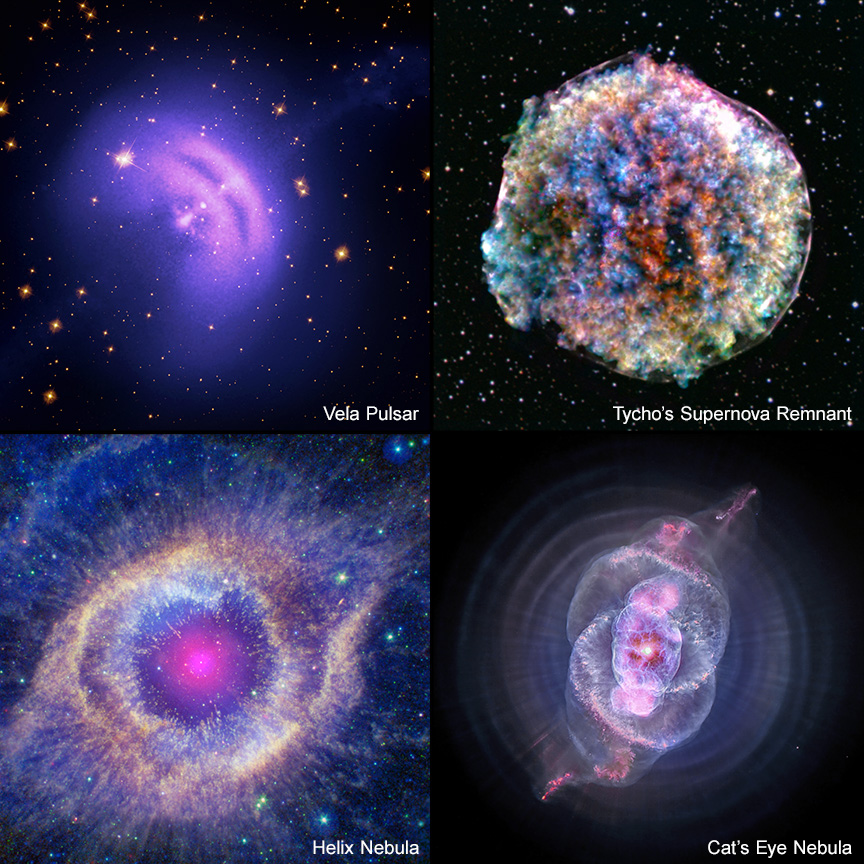A new project provides special 3D “experiences” on Instagram using data from NASA’s Chandra X-ray Observatory and other telescopes through augmented reality (AR), allowing users to travel virtually through objects in space. These new experiences of astronomical objects – including the debris fields of exploded stars – are being released to help celebrate the 25th anniversary of operations from Chandra, NASA’s flagship X-ray telescope.
In recent years, Instagram experiences (previously referred to as filters) of NASA mission control, the International Space Station, and the Perseverance Rover on Mars have allowed participants to virtually explore what NASA does. This new set of Chandra Instagram filters joins this space-themed collection.

“We are excited to bring data from the universe down to earth in this way,” said Kimberly Arcand, visualization and emerging technology scientist at the Chandra X-ray Center. “By enabling people to access cosmic data on their phones and through AR, it brings Chandra’s amazing discoveries literally right to your fingertips.”
The new Instagram experiences are created from 3D models based on data collected by Chandra and other telescopes along with mathematical models. Traditionally, it has been very difficult to gather 3D data of objects in our galaxy due to their two-dimensional projection on the sky. New instruments and techniques, however, have helped allowed astronomers in recent years to construct more data-driven models of what these distant objects look like in three dimensions.
These advancements in astronomy have paralleled the explosion of opportunities in virtual, extended, and augmented reality. Such technologies provide virtual digital experiences, which now extend beyond Earth and into the cosmos. This new set of Chandra Instagram experiences was made possible by a collaboration including NASA, the Smithsonian Institution, and students and researchers at Brown University.
These Instagram experiences also include data sonifications of the celestial objects. Sonification is the process of translating data into sounds and notes so users can hear representations of the data, an accessibility project the Chandra team has led for the past four years.
“These Chandra Instagram experiences are another way to share these cosmic data with the public,” said Arcand. “We are hoping this helps reach new audiences, especially those who like to get their information through social media.”
The objects in the new Chandra Instagram experience collection include the Tycho supernova remnant, the Vela Pulsar, the Helix Nebula, the Cat’s Eye Nebula, and the Chandra spacecraft. The 3D models of the first three objects were done in conjunction with Sal Orlando, an astrophysicist at Italy’s National Institute for Astrophysics (INAF) in Palmero. The Cat’s Eye Nebula was created with data from Ryan Clairmont, physics researcher and undergraduate at Stanford University. Arcand worked with Brown’s Tom Sgouros and his team, research assistant Alexander Dupuis and undergraduate Healey Koch, on the Chandra Instagram filters.
The experiences include text that explains what users are looking at. The effects are free and available on Instagram on mobile devices for at least six months, and some will remain viewable in perpetuity on the Smithsonian’s Voyager 3D website.
“There is a lot of rich and beautiful data associated with these models that Healey and I looked to bring in, which we did by creating the textures on the models as well as programming visual effects for displaying them in AR,” said Dupuis. Add links?
NASA’s Marshall Space Flight Center manages the Chandra program. The Smithsonian Astrophysical Observatory’s Chandra X-ray Center controls science from Cambridge Massachusetts and flight operations from Burlington, Massachusetts. The Chandra X-ray Center is headquartered at the Smithsonian Astrophysical Observatory, which is part of the Center for Astrophysics | Harvard & Smithsonian.
Read more from NASA’s Chandra X-ray Observatory.
For more Chandra images, multimedia and related materials, visit:
https://www.nasa.gov/mission/chandra-x-ray-observatory/
News Media Contact
Megan Watzke
Chandra X-ray Center
Cambridge, Mass.
617-496-7998
Jonathan Deal
Marshall Space Flight Center
Huntsville, Ala.
256-544-0034
from NASA https://ift.tt/YzqMWDt


No comments:
Post a Comment